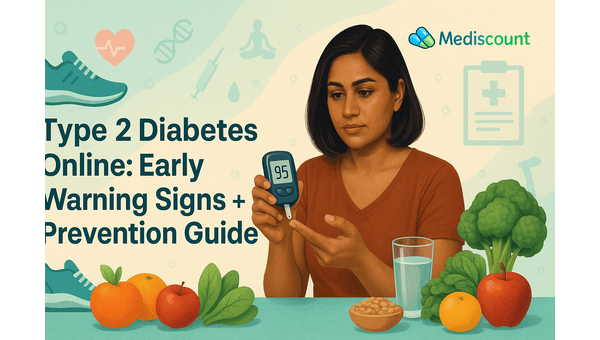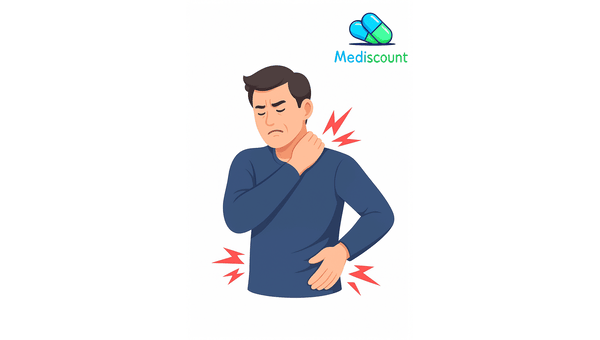Best Tablets for Muscle Pain and Stiffness
Oct 14, 2025
Intagesic-MR Tablet: A Specific Choice for Muscle Pain and Stiffness
People who have muscle pain, spasms, or stiffness from an injury, overuse, back strain, or a musculoskeletal ailment typically look for a single tablet that can help with both inflammation and muscle spasms. One such alternative is Intagesic-MR, which has anti-inflammatory, pain-relieving, and muscle-relaxing effects.
What does Intagesic-MR do?
Intagesic-MR is a pill that contains three active ingredients:
Diclofenac (50 mg) is a nonsteroidal anti-inflammatory medicine (NSAID) that helps with pain, swelling, and inflammation.
Paracetamol/Acetaminophen (325 mg) is a pain reliever and fever reducer that works in the brain.
Chlorzoxazone (250 mg) is a muscle relaxant that works in the brain and reduces spasms and stiffness in muscles.
Intagesic-MR is typically recommended to help with unpleasant muscular spasms and stiffness since it has three effects: it reduces inflammation, it relieves pain, and it relaxes muscles.
Uses and Therapeutic Role
Some of the most common therapeutic uses for Intagesic-MR are:
Muscle spasms, sprains, and strains
Back discomfort caused by tight muscles
Musculoskeletal pain with inflammation and spasms at the same time
Pain, swelling, and soreness due to injuries or disorders that happen after surgery that affect muscles and soft tissues
It is occasionally utilized in more extensive situations (e.g., joint pain, osteoarthritis) according to clinical discretion, while its primary application pertains to the muscle spasm-inflammation interface.
Many painful muscle disorders have both inflammatory and spastic parts, thus a combination therapy like Intagesic-MR can make treatment easier for some patients by not having to prescribe separate NSAIDs and muscle relaxants.
Pros and Cons
Possible Benefits
The combination pill covers a lot of ground: it treats inflammation (with diclofenac), pain (with paracetamol), and muscular spasms (with chlorzoxazone).
Convenience: Patients are more likely to follow their treatment plan when they have fewer pills to take.
Synergistic effect: The parts may work together in ways that make them more effective than a single agent alone.
Fast onset: Many people say they feel better within 30 minutes.
Important Warnings and Limitations
Gastrointestinal (GI) risks: Like with any NSAID, there is a chance of stomach irritation, ulcers, bleeding, or GI distress. People who have had GI problems in the past should be careful.
Stress on the liver and kidneys: The combined chemicals can put a lot of stress on the liver and kidneys, especially in people who already have liver or kidney problems.
Sedation or drowsiness: Some people may feel sleepy, dizzy, or less aware because of the muscle relaxant chlorzoxazone.
Drug interactions: Taking other NSAIDs, blood thinners, or drugs that the liver breaks down at the same time can cause bad reactions.
Not good for long-term use: The hazards of using NSAIDs and muscle relaxants for a long period add up over time. The combination is better for short-term or acute episodes than for long-term therapy.
Some circumstances make it unsafe to use: If you have peptic ulcers, heart illness, liver disease, renal disease, pregnancy, or a known allergy to one of its parts, you shouldn't take it.
Dosage, How to Take It, and Useful Advice
Typical regimen: Sources say that adults usually take one tablet three times a day, after meals, for a short time (usually up to 10 days).
Always take with food to avoid upsetting your stomach.
Don't break, chew, or crush the tablet. Take a big drink of water.
Do not take more than the recommended dose or mix it with other NSAIDs or painkillers that contain paracetamol or diclofenac.
If you notice any of the following adverse symptoms, you should see a doctor right away: upset stomach, bleeding, skin rash, jaundice, dark urine, or unusual tiredness.
Safety and Warnings (What Patients Need to Know)
Allergy or hypersensitivity: Don't use if you are allergic to diclofenac, paracetamol, chlorzoxazone, or any of the other ingredients.
If you have or have had peptic ulcer disease, you shouldn't have GI bleeding or ulcers.
Heart problems: Long-term use of NSAIDs raises the risk of heart problems (such heart attack or stroke) in people who are already at risk.
Liver or kidney disease: People with liver or kidney problems should not use it, or they should be closely watched while using it.
Pregnancy and breastfeeding: It is not usually safe to do without medical supervision while pregnant or breastfeeding.
Don't drink alcohol. It can make GI problems worse and make you more sleepy or stress your liver.
Patients should not drive or use machinery while getting treatment since they can get sleepy.
To avoid bad interactions, always tell the physician about any other medications you are taking, including as anticoagulants, corticosteroids, other NSAIDs, and renal treatments.
Putting Intagesic-MR at the right place among available tablets
Intagesic-MR is the finest choice for muscle pain and stiffness because it works in several ways. It is best for circumstances where:
There is both inflammation and muscle spasms.
A simpler regimen is preferred (a combination of medications instead of many distinct ones).
There are no reasons why the patient shouldn't be treated, and they are being watched closely.
But for people who are at high risk for GI, liver, kidney, or heart problems, or who need long-term treatment, monotherapy or other drugs may be safer.
So, for Mediscount readers, Intagesic-MR can be shown as a high-quality choice (where clinically appropriate), but with explicit warnings and instructions on when not to take it.
Recent Post

Mediscount's Guide to Better Digestion Online for Gut Health

Type 2 Diabetes Online: Early Warning Signs + Prevention Guide

High Blood Pressure – How to Lower It Naturally | Mediscount

How to Lose Weight Safely and Naturally: A Complete Guide by Mediscount

Top 10 Pain Relief Gels for Instant Relief from Muscle and Joint Pain

Top 10 Benefits of Creatine Monohydrate for Fitness and Brain Health

The Right Way to Take Creatine: Loading, Maintenance & Daily Usage Explained

Creatine Monohydrate: The Ultimate Workout Supplement for Strength and Performance

Power of Nature: A Complete Herbal Hair Oil Blend for Stronger, Healthier Hair

Daily Multivitamins, Multiminerals, and Antioxidants: The Foundation of Everyday Wellness


